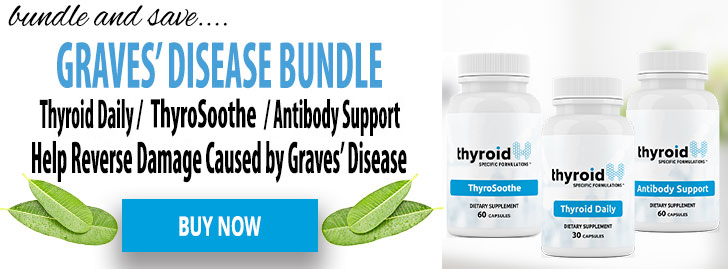Anti-Thyroglobulin
Less consistently specific with Hashimoto’s, thyroglobulin does still have overlap with arthritis, diabetes, and celiac disease.
Both thyroglobulin and thyroperoxidase are present in Graves’ disease. In fact, up to half of the people with Graves’ disease may have anti-thyroglobulin.
Anti-Thyroid Stimulating Immunoglobulin
Thyroid stimulating immunoglobulin, or TSI for short, is an easy thing to think about: TSI is just about TSH, and that is kind of how it works in the body, too.
We can think of TSI as an unhealthy signal. It goes from your immune system telling your thyroid to release hormone.
When there is too much thyroid hormone, your brain shuts off TSH trying to slow down your thyroid. But, your TSI can continue making your thyroid work (even if your body is trying to stop it).
TSI is present in 90% of patients with Graves’ disease. About 10% of the time it can be present in those that have Hashimoto’s disease.
When TSI is high, it can pose a great risk for Graves’ disease – but it can also pose a risk for Graves’ eye disease (and Graves’ dermopathy, a skin disorder).
That is why, in this case, it does help to keep TSI down to help control other non-thyroid negative health outcomes.
Anti-Thyroid Receptor Antibodies
This is a variation of TSI that is important to know about. In fact, it is pretty much the same thing, but it is not as good of a predictor as TSI. Over half of those with Graves’ disease will not have high levels of thyroid receptor antibodies.
It does not have non-thyroid effects, so the jury is out on whether it has any other effects apart from being closely related to TSI. It is also not commonly tested for, because it is less predictive.
Thyroglobulin
So, now that we covered the antibodies, let’s touch on thyroglobulin. Antithyroglobulin is the attack on the protein that forms the thyroid hormone. Thyroglobulin, though, is just the protein itself and nothing more.
Some of it is normal in the bloodstream, and it is proportionate to the rate of thyroid cell death.
Thyroid cells wear out, die, and new ones take their place – so the rate at which they are dying is the amount of thyroglobulin in the bloodstream.
Thyroglobulin is most useful to determine what someone’s risk would be for thyroid cancer or a recurrence of thyroid cancer.
The data is at its best when someone has had thyroid cancer, and they had high thyroglobulin before they went on treatment.















